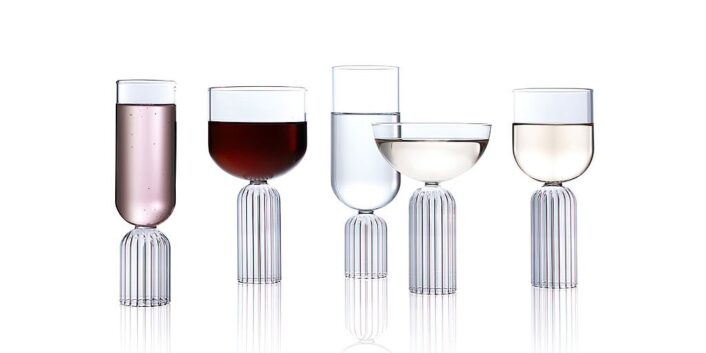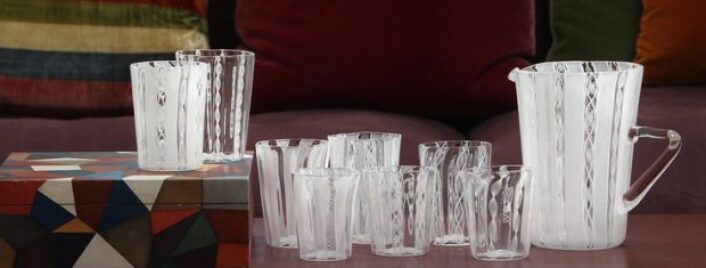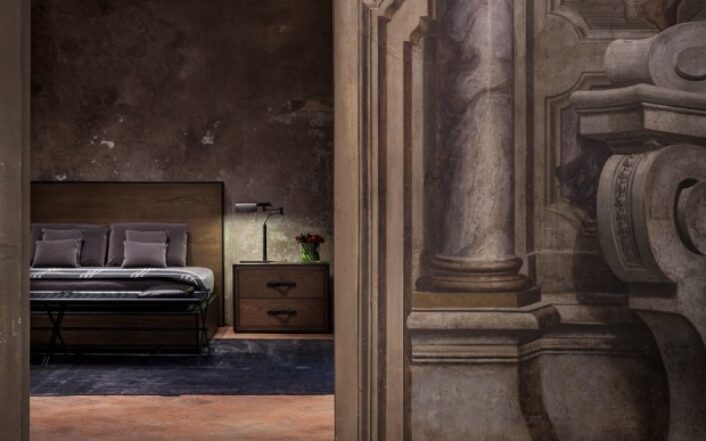Design
Tom Dixon
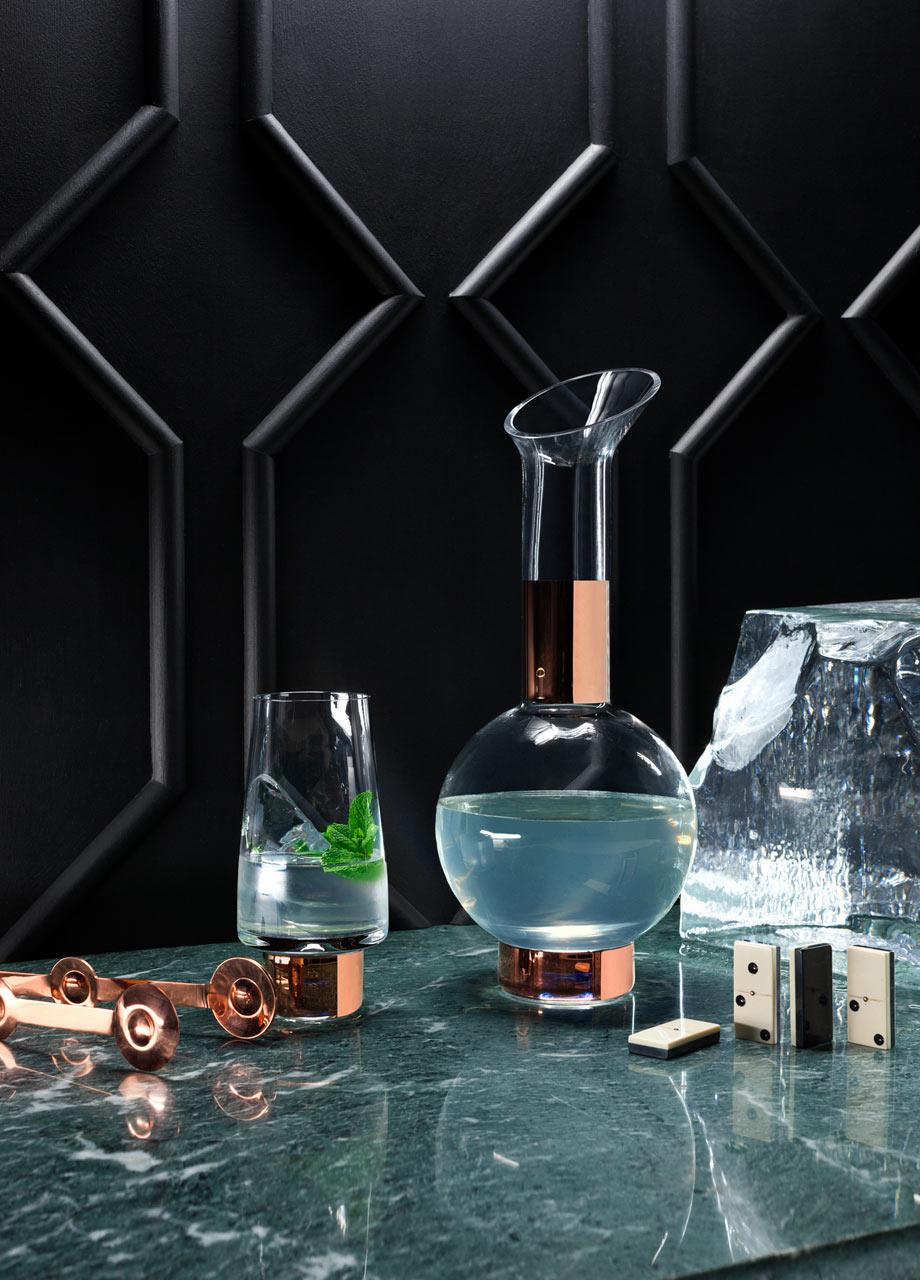
Pieces from the TANK barware collection.
Image courtesy of: Design Milk
Pieces by Tom Dixon have a special feeling to them… especially, the stunning barware that is made with copper accents. However the British luxury designer has a lot more than barware to offer. Established in 2002, the luxury design brand has grown by leaps and bounds. Tom Dixon is presently represented in ninety countries, they have hubs in Italy, the UK, New York, Hong Kong, and China.
The British designer was born in Tunisia; however he moved to England in 1963. For a number of years, Dixon went to the Chelsea School of Art; however he dropped out of school to play in a band prior. Following that stint, Dixon started teaching himself how to produce furniture. In the mid-1980’s, Dixon became a household name and was called a (courtesy of the brand’s website) “talented untrained designer with a line in welded salvage furniture.”
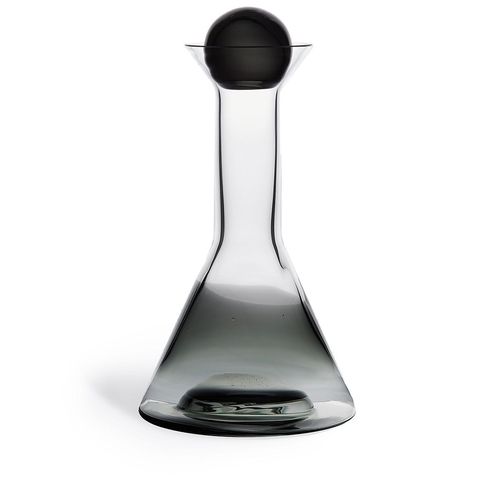
Tank Decanter in black.
Image courtesy of: GOXIP
Early on, Dixon was more of a craftsperson than a designer. He was masterful in manipulating industrial materials and discarded objects to create “salvage furniture.” Specifically, Dixon was drawn to copper… this is especially meaningful as the material distinguishes itself from other metals by having the longest and richest historical connection to humans. As such, the semi-precious material has informed some of the brand’s most recognized designs.
In 2002, Dixon set up his own design studio where he was free to produce iconic designs such as Mirror Ball, Copper Shade, Beat Light, and Wingback Chair. A cult following quickly ensued, and accolades followed; particularly, the Order of the British Empire award by Her Majesty the Queen for service to British design and Designer of the Year at Maison & Object, Paris.
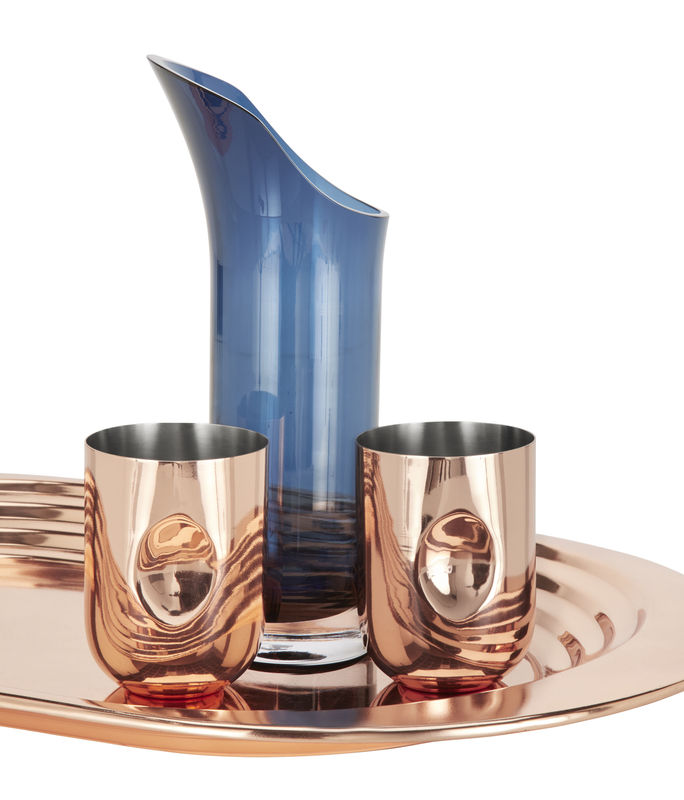
Glass Plum Moscow Mule metal copper, set of two. Made from copper-plated steel, “Tom Dixon” logo engraved under the glass.
Image courtesy of: Made in Design
Dixon’s designs tend to be uncomplicated… that is not to say that they are simple; they are minimalist with expression and never fussy. Today, some of the studio’s best selling products such as Beat, the S Chair, the Wingback, and Melt are instantly recognized. In addition, some of these special products are now part of world famous museums including the MOMA in New York City, the V&A Museum in London, and the Centre Pompidou in Paris.
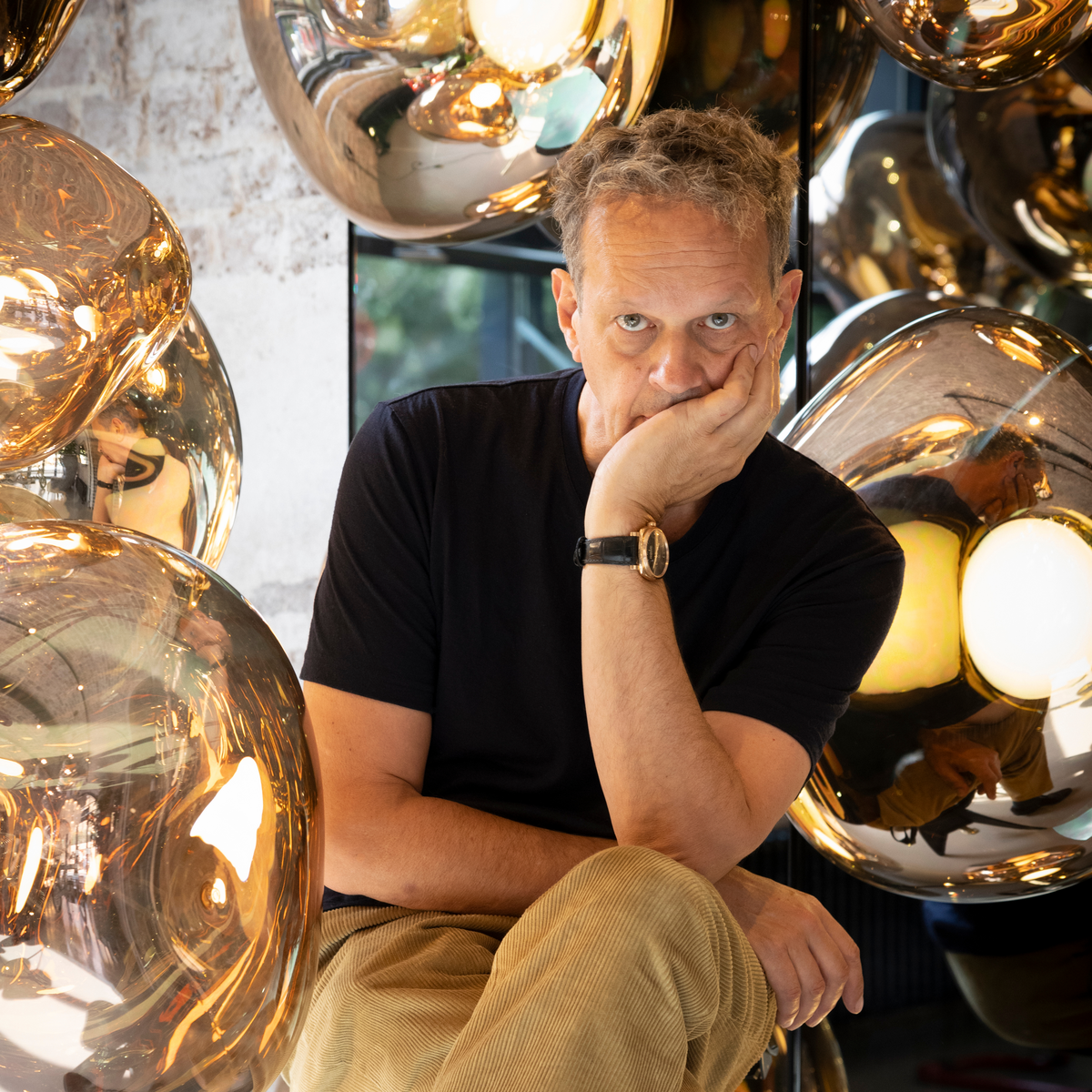
Tom Dixon
Image courtesy of: Lumens
Last year at Milan Design Week, Dixon unveiled Twenty, an explorative and informative exhibition that is a summary of the past two decades of his work. Beautifully curated, the exhibition was presented at the Palazzo Serbelloni, an 18th-century palace in Milan that is home to Sotheby’s.
The show was mostly comprised of Dixon’s iconic pieces… some of which were altered or updated for the exhibition. The S Chair, for example, was included; the idea for the chair was originally a doodle for a chicken. It was originally made from recycled rubber tires and then produced in leather and textile by the Italian furniture house, Capellini. In addition, the exhibition also showcased the studio’s experimental arm. Specifically, Accretion is a metal chair that was designed to be “grown” underwater. The proposal by Wolf Hilbertz, a scientist that believes in growing entire cities underwater, has evolved. For his part, Dixon is cultivating three chairs in the Bahamas with hopes that this might (courtesy of Dezeen) “be a way to capture carbon and re-generate the world’s disappearing coral reefs.”
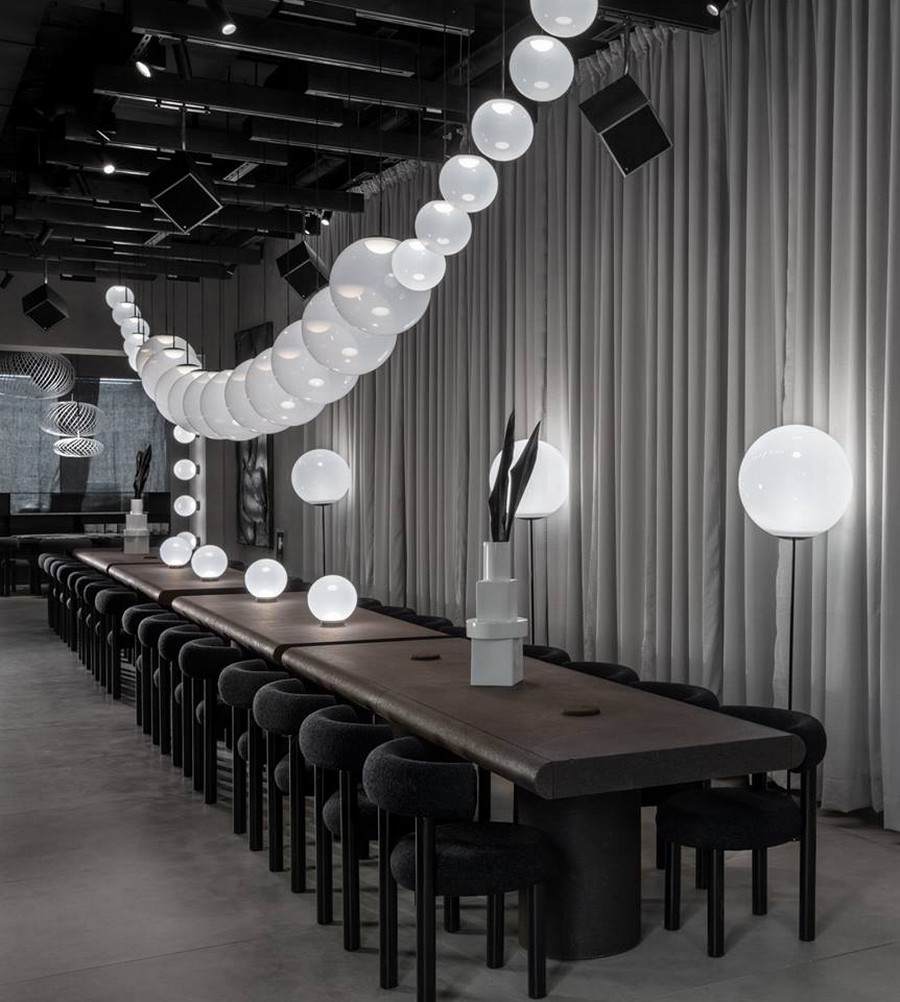
A Manzoni chandelier at a Milan restaurant!
Image courtesy of: Inspirational Design Books
Dixon is also excited about collaborations such as The Manzonis restoration which is a partnership between the studio’s Design Research Studio and JLK Design Studio. For example, the Fat chair is a new upholstery chair that hugs the body and allows for movement as it conforms to many different sitting positions. Made from molded foam with a metal leg, it debuted in a high gloss black lacquer finish and made-to-order upholstery.
As for the lighting fixtures, the Spring and Opal also debuted at the restaurant. Spring is a series of three pendant lamps made from stainless-steel strips and Opal is comprised of two pendant lights, two-floor lights, and a surface light made with translucent globes. About the project, Dixon said, “There is nothing dustier than a conventional lighting and furniture showroom. But with The Manzoni, people are able to experience our new collections in an active context.” Yes, what a wonderful showroom for these wonderful pieces!
